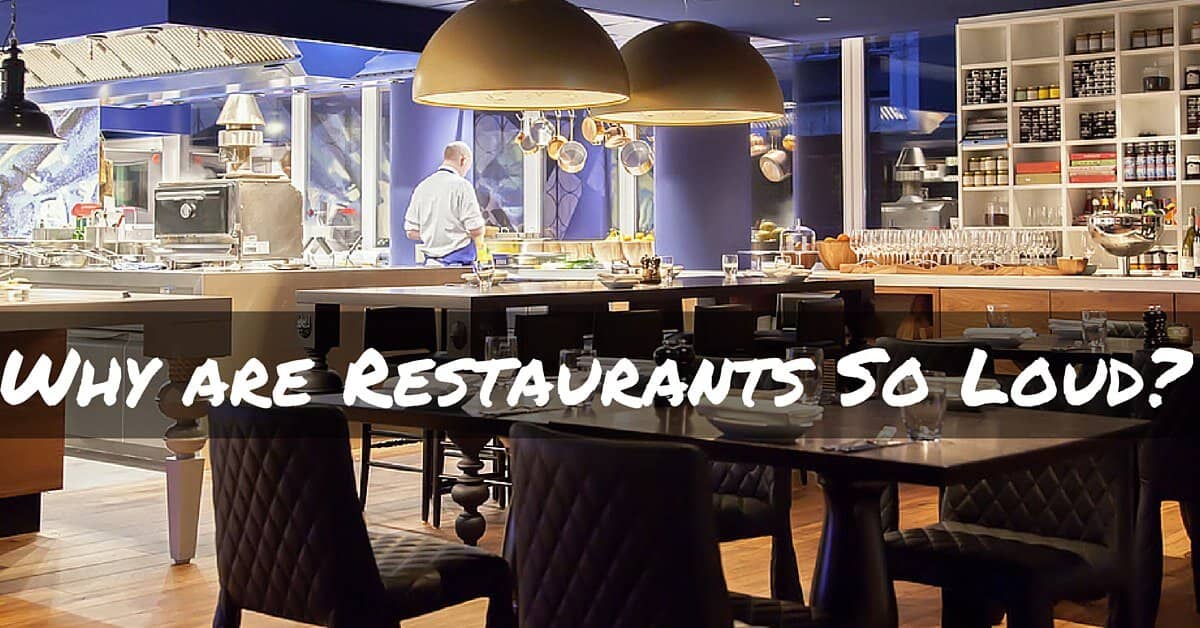
What Did You Say?
In the past decade, chefs have become the new rock stars and restaurants the new live venue. So it should come as no surprise that restaurants are louder in recent years than in the past.
New York Magazine notes this phenomenon: “Most restaurant scholars will tell you that the Great Noise Boom began in the late nineties, when Mario Batali had the genius idea of taking the kind of music he and his kitchen-slave compatriots listened to while rolling their pastas and stirring their offal-rich ragus and blasting it over the heads of the startled patrons in the staid dining room at Babbo…Sound systems were cranked up and suddenly noise became the hallmark of a successful New York restaurant.”
The cost of this loud, vibrant, festive ambiance is conversation. We go out to dinner as a form of socializing and spending time together – but what’s the point if you can’t hear your dining companion?
Contemporary Restaurant Design
The acoustics of restaurants have evolved along with the aesthetics of a restaurant. As cuisines become more experimental, restaurant design followed suit. Contemporary restaurants tend to embody the same aesthetics: minimal and clean, with elements of wood, iron, exposed brick, and concrete, with little in terms of linen and table dressings.
The carpeting and tablecloths of restaurants passed provided a cushion to the sounds of clinking glasses, silverware, and diners’ voices. A newer trend includes an open kitchen design, which allows the sounds of clanging pots and pans and cooks’ chatter to seep into the restaurant ambiance as well.
The trend seems to follow a principle that the louder and livelier the place is, the more likely diners will have a good time socializing. Bon Appetit magazine writes that “very few people want to socialize in a silent room.”
Speech Recognition & Hearing Loss
Even for people with normal hearing, the environment of a restaurant may make conversation difficult. A study found that people with hearing loss who wore Siemens binax hearing aids could hear better in a noisy restaurant than people with normal hearing.
People with hearing loss have difficulty with speech recognition, especially in environments such as noisy restaurants. In fact, people with untreated hearing loss tend to withdraw socially and avoid situations such as these, where they must struggle to hear their friends across the table.
Hearing loss muddles sound signals, making it difficult for people with hearing loss to focus on the sounds they want to hear and also to anticipate speech patterns that our brains recognize in conversations.
Assistive Listening Devices & Acoustic Panels
Luckily, the loud restaurant trend is not favored by all. In recent years, especially, there have been numerous articles and editorials written about the overwhelming noise in restaurants. The New York Post had an article titled “Can dining out make you deaf?” while overseas, the Daily Mail in the UK asks, “Can’t hear a word our other half asks when you dine out?”
Restaurant critic Richard Vines wrote a piece for Bloomberg News in which he interviews an acoustic consultant for restaurants. Jeremy Luscombe of Resonics says that because “Industrial design with concrete finishes and hard surfaces mean noise is propelled around the room,” the best solution would be to soften the sounds with acoustic panels on walls and ceilings.
Diners who struggle in restaurants may want to make this recommendation to restaurant management. At the same time, for diners who are hard of hearing, there are a number of assistive listening devices that can be utilized to amplify the sounds of your dining companions’ voices. Pocket amplifiers may be used, as well as smartphones with the microphone mode turned on to stream directly to hearing aids.
For information on wireless, digital hearing aids that offer this feature, talk to us at My Hearing Centers.
